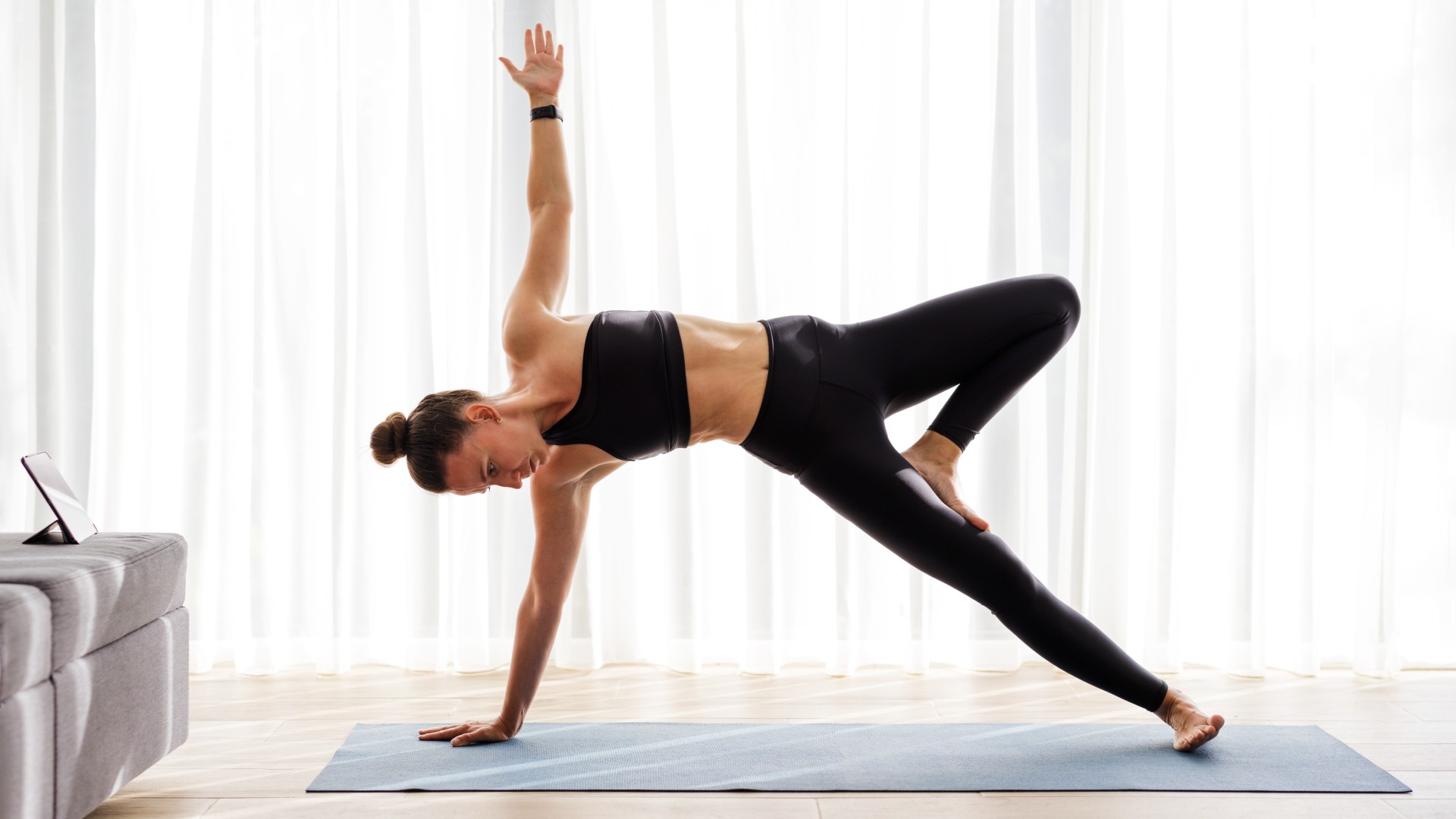The 10-minute yoga workout that instantly relieves tight muscles and fights fatigue
The internet’s favorite yogi has dropped a new workout, so roll out your yoga mat and prepare to relieve some aches and pains

Despite what their name implies, rest days don’t have to just involve resting. Truth be told, this is far from the case. Rest days, which can be defined as a day where you take a break from intense exercise to help your body rebuild and recover, can (and should) often involve active recovery workouts.
The term active recovery is described as any form of low-intensity exercise completed on a rest day. For example, this could involve something as simple as walking, going for a steady swim, or completing a short stretching or mobility routine, like this 10-minute example from yoga instructor Adriene Mishler of Yoga with Adriene.
Describing the workout, Mishler tells her YouTube followers: “In this practice, I will guide you through gentle and effective stretches to care for your muscles, stabilize your joints, and help melt away fatigue. Whether you're winding down after a workout, relieving tension from daily stress, or simply craving a moment of ease, this sequence will help you release tightness, improve mobility, and restore balance.”
If that sounds like your kind of active recovery session, roll out your yoga mat and get ready to flow. Keep scrolling to discover how to complete this practice and discover how often you should have a rest day.
Watch how to do this 10-minute yoga practice
This full-body yoga stretch is designed to be completed on your recovery days. That said, you could always whack this onto the end of a full-body workout to help increase flexibility and potentially reduce stiffness after an intense bout of exercise.
Either way, Mischler’s yoga-inspired stretch will help you release tension, recover, and restore. Explaining how, the yogi says: “In yoga philosophy, ahimsa (the practice of non-harm) teaches us to approach ourselves with kindness, patience, and care.
“This gentle 10-minute stretch is an invitation to embody that principle, offering your body the space to release tension, recover, and restore. Take this time to tend to yourself and honor your body’s wisdom!”, adds Mischler.
Get instant access to breaking news, the hottest reviews, great deals and helpful tips.
In the workout, all of Mishler’s stretches are floor-based and involve moving your body with your breath, which is a key aspect of yoga.
If you’ve tried yoga before, you might have completed many of these moves as the stretching routine contains some classics, like a downward dog pose, a low lunge, which is one of the best stretches for tight hips, and a forward fold.

How often should you have a rest day?
It’s a good question. Rest days are essential to boosting recovery, building strength and muscle growth. There are many reasons not to skip rest days. For starters, avoiding rest days can increase your likelihood of injury and burnout. It can also result in a decrease in performance and motivation.
The common train of thought is that those who engage in high-intensity exercise, like athletes, should schedule a rest day every seven to 10 days. While other people or beginners may need more frequent rest days, such as two or three per week.
Of course, when you’ve got goals to hit and gains to make, rest days might not feel obligatory. But knowing when to take a rest day can make all the difference for your mind and body.
Some of the best fitness trackers, like an Apple Watch or Oura Ring, can help you decide on whether or not you need a rest day by providing data on your activity, sleep, and heart rate. The latter can even give you a ‘Readiness Score’, ranging from 0-100, which flags how ‘ready’ your body is for the day.
Tech and stats aside, other warning signs you might need a rest day could include lack of focus, an increase in injuries, fatigue or low mood.
More from Tom's Guide
- I'm a personal trainer — these are the 3 simple rules to follow if you want to build strength and muscle
- I boosted my exercise recovery with heat and cold therapy — here’s what happened
- This 7-move stretching routine increases your range of motion and boosts your recovery
Becks is a lifestyle journalist who specializes in writing about wellness and home products, from mattresses to weighted blankets and cooling comforters. She has tested a number of mattresses for Tom's Guide, putting them through their paces to see if they stand up to the brand's claims, and offering recommendations as to the type of sleeper they will (and won't) suit.
You must confirm your public display name before commenting
Please logout and then login again, you will then be prompted to enter your display name.


